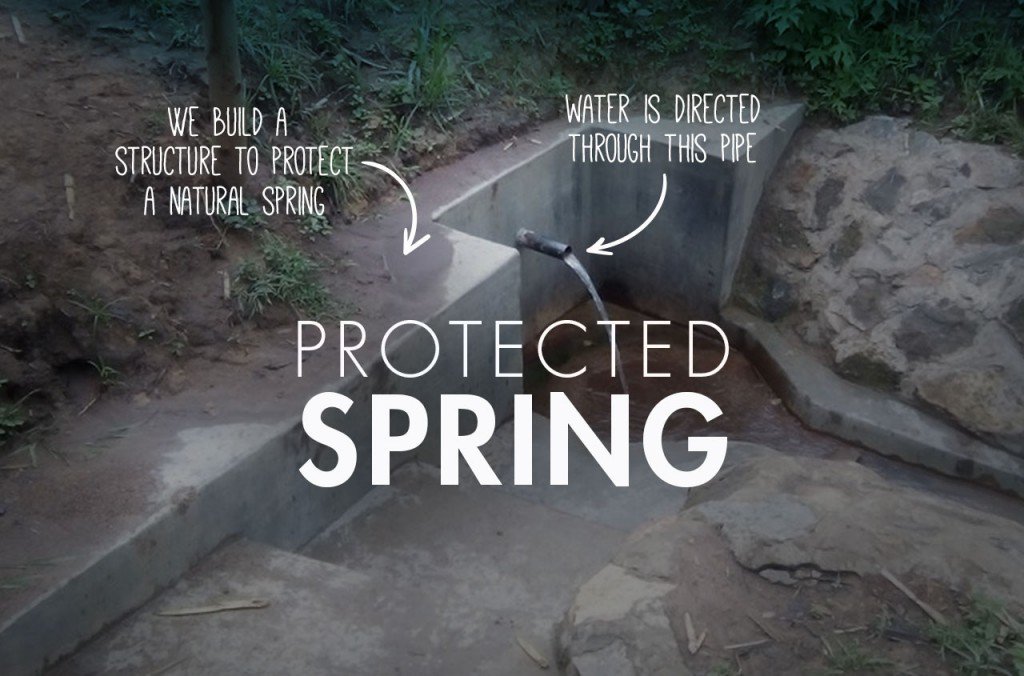
Thank you!
Your code has been submitted
Welcome to the AvanaGives family! Scroll down to see the details and location of your project.
Protected Spring
In many communities, natural springs exist as water flows from cracks in rocky ground or the side of a hill. Springs provide reliable water but that doesn’t mean safe. When left open they become contaminated by surface contamination, animal and human waste and rain runoff. The solution is to protect the source. First, you excavate around the exact source area of the spring. Then, you build a protective reservoir for water flow, which leads to a concrete spring box and collection area. Safe water typically flows year-round and there is very limited ongoing maintenance needed.

Project Details

“Families here are small, though they live as an extended family on the same piece of land. The parents work on different jobs to bring food to the table while the older children are tasked to take care of the home and their younger siblings during the day.” Ian Nakitare, Field Officer
The Community
Water from Shamala Spring in Malimali Community is consistently available and consistently unsafe for drinking. The spring is plagued by insects and dirty runoff from nearby farms. Once at the spring, one must dip their entire container into the spring’s reservoir puddle to fill it up, adding whatever contaminants were on the container into the water being collected. And collecting whatever contaminants were already in the water.
The most common causes of death in Malimali are typhoid and malaria, which community members say are directly connected to their water source at Shamala Spring. These sicknesses are not only a big health concern, but they also place a great financial strain on the community members who are trying to pay for treatment and medicine.
Knowing their water source is unprotected, community members do their best to make it safer by boiling it, letting it cool, then pouring it through a sieve to strain out large particles of dirt and sand. A lot of time is wasted throughout this lengthy process for every bucket of water collected. The water is then stored in whatever containers are on hand, but the frequency of cleaning out the stored water is concerning. Most households only change out the containers after they notice large particles of algae or other growths in it.
The Solution
Spring Protection
Protecting the spring will help provide access to cleaner and safer water. Construction can keep surface runoff and other contaminants out of the water. With the community’s high involvement in the process, there should be a good sense of responsibility and ownership for the new clean water source.
Training
Community members will attend hygiene and sanitation training for at least 2 days. This training will help ensure participants have the knowledge they need about healthy practices and their importance. One of the most important topics The Water Project plans to cover is the handling, storage, and treatment of water. Having a clean water source will be extremely helpful, but it is useless if water gets contaminated by the time it is consumed. The Water Project will also emphasize the importance of handwashing.
Sanitation Platforms
Training will inform the community and selected families on what they need to contribute to make this project a success. All community members must work together to make sure that accommodations and food are always provided for the work teams.
The information regarding this project was provided to Avana® by The Water Project. While the information contained within this website is periodically updated, no guarantee is given that the information provided in this website is correct, complete, and up-to-date. Due to the nature of the project, stage of completion and privacy concerns for project recipients, some photographs, diagrams and other depictions on this site may be illustrative and not representative of the actual project.



